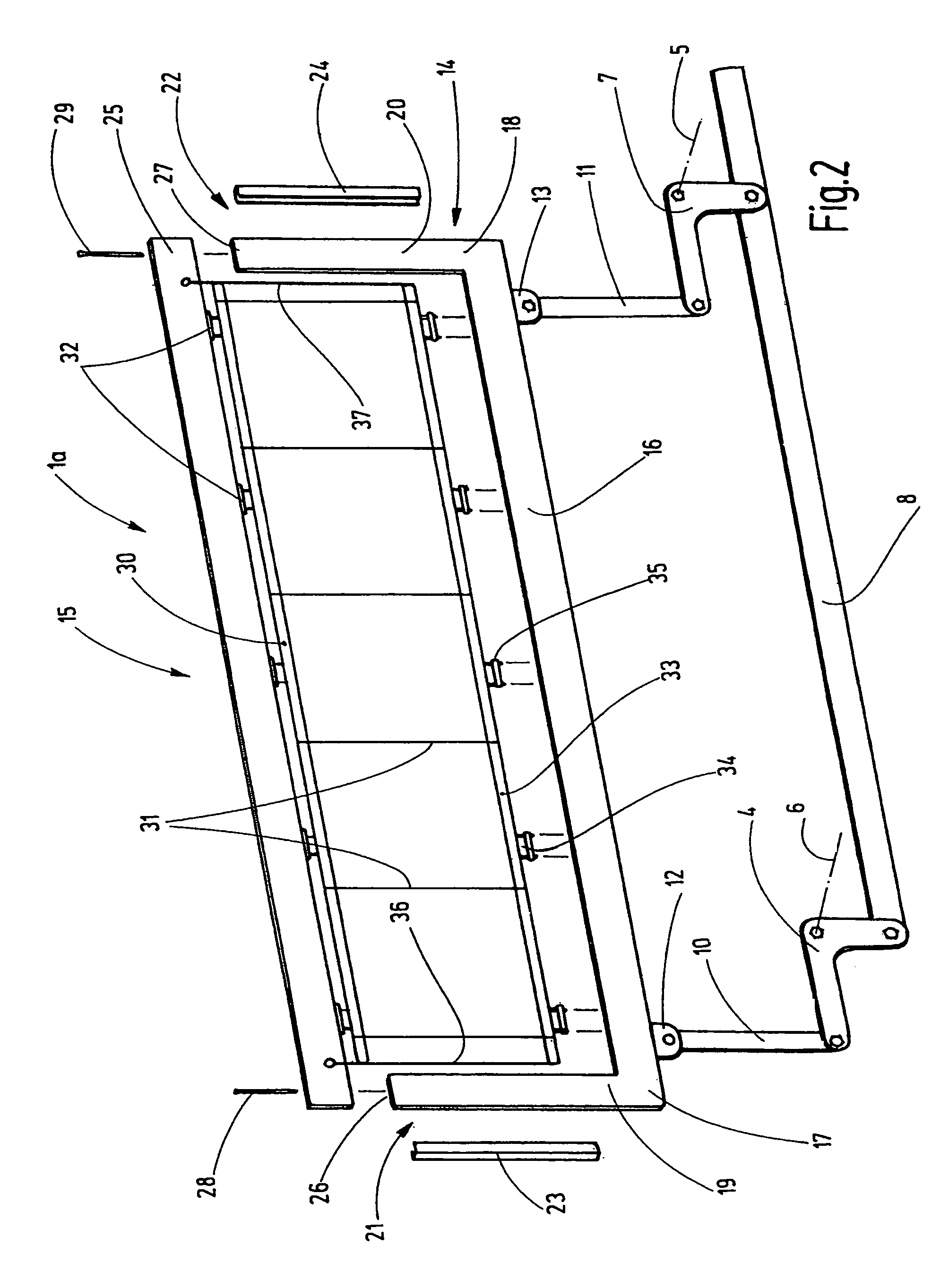Dividable two-part heald shaft
a two-part, healing shaft technology, applied in weaving, other shedding mechanisms, textiles and papermaking, etc., can solve the problems of unwieldy overall system, two healing mounting rails with healds seated on them, and represent a bit of a problem, so as to reduce vibration, increase weaving speed, and minimize play
- Summary
- Abstract
- Description
- Claims
- Application Information
AI Technical Summary
Benefits of technology
Problems solved by technology
Method used
Image
Examples
Embodiment Construction
[0022]FIG. 1 shows a heald shaft 1 which is used for shed-forming in a weaving machine. To do so, the heald shaft 1 is driven to perform a vertical up-and-down movement as is symbolically indicated by an arrow 2 in FIG. 1. A drive device 3 is provided, said device imparting the heald shaft 1 with this motion. The drive device 3, for example, comprises a rod assembly that may include two or more rectangular levers 4, 5 that are supported so as to be pivotable about stationary rotational axes 6, 7. While the ends of these rectangular levers 4, 5—preferably facing downward when in use—can be connected to each other via a connecting rod 8 and to a shed-forming machine via a joint bar 9, the preferably approximately horizontally aligned arms of the rectangular levers 4, 5 are connected to the heald shaft 1 via joint bars 10, 11. The respective lower end of said joint bars is preferably connected to the rectangular levers 4, 5 in an articulating manner, and their upper end is connected to...
PUM
 Login to View More
Login to View More Abstract
Description
Claims
Application Information
 Login to View More
Login to View More - R&D
- Intellectual Property
- Life Sciences
- Materials
- Tech Scout
- Unparalleled Data Quality
- Higher Quality Content
- 60% Fewer Hallucinations
Browse by: Latest US Patents, China's latest patents, Technical Efficacy Thesaurus, Application Domain, Technology Topic, Popular Technical Reports.
© 2025 PatSnap. All rights reserved.Legal|Privacy policy|Modern Slavery Act Transparency Statement|Sitemap|About US| Contact US: help@patsnap.com



